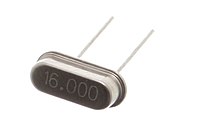
Photo from wikipedia
Abstract The mechanical response of nuclear structural materials and their lifetime are strongly affected by radiation effects. This influence is of concern, especially in body centered cubic materials, which exhibiting… Click to show full abstract
Abstract The mechanical response of nuclear structural materials and their lifetime are strongly affected by radiation effects. This influence is of concern, especially in body centered cubic materials, which exhibiting a well-defined ductile to brittle transition. The ductile to brittle transition temperature itself is dose-dependent and may rise to or above the room temperature. In the current work, irradiation effect is modeled to predict the dose-dependent changes of the effective dislocation mobility, represented by the Defect Induced Apparent Temperature shift ( Δ DIAT). Mainly dislocation based crystal plasticity material model is used rather than a phenomenological approach. This material model accounts for both thermally activated dislocation mobility and dislocation mobility in an athermal regime of body centered cubic materials. The defect-induced evolution of Δ DIAT in turn analyzed and their relations with the fracture response are highlighted and discussed.
Journal Title: Progress in Nuclear Energy
Year Published: 2021
Link to full text (if available)
Share on Social Media: Sign Up to like & get
recommendations!